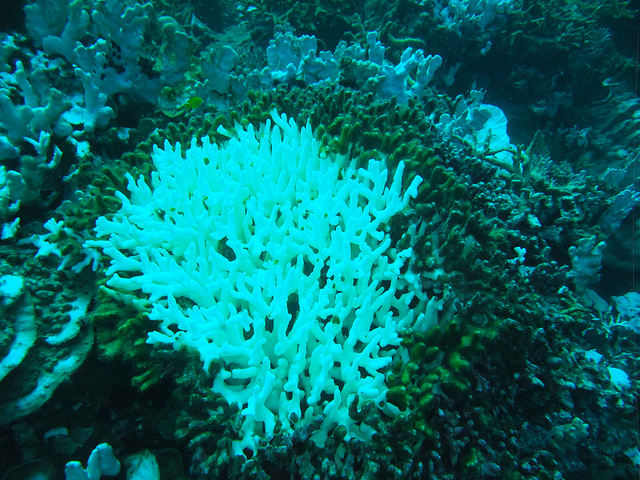Report on the Decline of Large Predatory Fishes in the Western Indian Ocean and Its Implications for Sustainable Development Goals
Introduction
Recent research highlights a significant decline in predatory and large-bodied fish populations in the western Indian Ocean, primarily due to overfishing, unregulated fishing practices, and climate change. This decline poses a critical threat not only to marine biodiversity but also to the health of coral reef ecosystems and the livelihoods of coastal communities. This report emphasizes the urgent need to address these challenges in alignment with the United Nations Sustainable Development Goals (SDGs), particularly SDG 14 (Life Below Water), SDG 2 (Zero Hunger), and SDG 13 (Climate Action).
Key Findings
- Populations of sharks, large groupers, humphead parrotfish (Bolbometopon muricatum), and humphead wrasse (Cheilinus undulatus) have drastically declined across 27 coral reef sites in seven countries.
- Overfishing and inadequate management of marine protected areas (MPAs) have driven many species toward local extinction, with enforcement often insufficient even within legislated reserves.
- Climate change exacerbates the problem by causing coral mortality, which negatively impacts reef fish habitats and populations.
- These declines threaten food security and the economic well-being of millions who depend on marine resources, directly linking to SDG 2 (Zero Hunger) and SDG 1 (No Poverty).
Ecological and Socioeconomic Impacts
- Ecological Role of Large Predators: Large predatory fishes regulate prey populations, prevent outbreaks of reef-damaging species, and maintain coral reef productivity and energy flow, supporting SDG 14.
- Local Extinctions: Species such as the humphead wrasse, humphead parrotfish, and giant grouper are nearly absent in many areas, indicating ongoing local extinctions.
- Threats from Fishing Practices: The use of unselective gill nets and destructive fishing gear contributes significantly to population declines.
- Climate Change Effects: Rising sea temperatures cause coral bleaching and death, altering reef habitats and further threatening fish populations, aligning with concerns under SDG 13.
- Impact on Coastal Communities: The decline in fish populations jeopardizes food security and livelihoods for coastal populations, emphasizing the need for sustainable resource management.
Recommendations for Sustainable Management and Conservation
- Expand and Strengthen Marine Protected Areas (MPAs):
- Develop a network of well-managed MPAs and large sanctuaries to provide adequate space for recovery and thriving of large-bodied fishes.
- Enhance enforcement mechanisms to prevent illegal fishing within MPAs.
- Examples from the Solomon Islands demonstrate that bans on gill nets and large closures can restore reef shark populations.
- Improve Fisheries Management:
- Implement science-based interventions and modify fishing equipment through participatory approaches involving local fishing communities.
- Promote compliance with regulations and support enforcement patrols to ensure sustainable fishing practices.
- Enhance Data Collection and Monitoring:
- Utilize timed underwater visual surveys and baited remote underwater videos (BRUVs) to monitor large-bodied reef fishes effectively.
- Incorporate these methods into global standard coral reef monitoring protocols to fill critical knowledge gaps.
- Raise Awareness and Community Engagement:
- Educate local communities, fishers, and policymakers about the urgency of protecting large predatory fishes.
- Encourage active participation in conservation efforts to enhance effectiveness and sustainability.
Alignment with Sustainable Development Goals (SDGs)
- SDG 14: Life Below Water – Protecting marine biodiversity by conserving large predatory fish populations and coral reef ecosystems.
- SDG 2: Zero Hunger – Ensuring sustainable fisheries to maintain a crucial food source for millions of people.
- SDG 1: No Poverty – Sustaining the livelihoods of coastal communities dependent on marine resources.
- SDG 13: Climate Action – Addressing the impacts of climate change on coral reefs and fish populations.
- SDG 17: Partnerships for the Goals – Promoting collaboration among scientists, governments, and local communities for effective marine conservation.
Conclusion
The decline of large predatory fishes in the western Indian Ocean represents a critical ecological and socioeconomic crisis. Immediate and coordinated actions are essential to reverse these trends and achieve sustainable marine ecosystems that support biodiversity, food security, and coastal livelihoods. By aligning conservation efforts with the Sustainable Development Goals, particularly SDG 14, SDG 2, and SDG 13, stakeholders can work together to turn the tide and secure a resilient future for the region’s marine environment and communities.
Author Information
Melita Samoilys is a coral reef ecologist and director of Coastal Oceans Research and Development in the Indian Ocean (CORDIO), a marine research and conservation organization based in Kenya. She is a member of three IUCN Specialist Groups (Sharks; Snapper, Seabream and Grunt; Groupers and Wrasses).
References
- Obura, D., et al. (2021). Vulnerability to collapse of coral reef ecosystems in the western Indian Ocean. Nature Sustainability, 5(2), 104-113. https://doi.org/10.1038/s41893-021-00817-0
- Samoilys, M., et al. (2025). Effects of protection on large‐bodied reef fishes in the western Indian Ocean. Conservation Biology. https://doi.org/10.1111/cobi.14430
- Samoilys, M. A., et al. (2017). Artisanal fisheries on Kenya’s coral reefs: Decadal trends reveal management needs. Fisheries Research, 186, 177-191. https://doi.org/10.1016/j.fishres.2016.07.025
- Karkarey, R., et al. (2014). Long-lived groupers require structurally stable reefs in the face of repeated climate change disturbances. Coral Reefs, 33(2), 289-302. https://doi.org/10.1007/s00338-013-1117-y
- MacNeil, M. A., et al. (2020). Global status and conservation potential of reef sharks. Nature, 583(7818), 801-806. https://doi.org/10.1038/s41586-020-2519-y
- Obura, D. O., et al. (2019). Coral reef monitoring, reef assessment technologies, and ecosystem-based management. Frontiers in Marine Science, 6, 580. https://doi.org/10.3389/fmars.2019.00580
- Osuka, K. E., et al. (2021). Protection outcomes for fish trophic groups across a range of management regimes. Marine Pollution Bulletin, 173, 113010. https://doi.org/10.1016/j.marpolbul.2021.113010
1. Sustainable Development Goals (SDGs) Addressed or Connected
- SDG 14: Life Below Water
- The article focuses on the decline of predatory and large-bodied fishes in the western Indian Ocean, highlighting issues such as overfishing, unregulated fishing practices, and climate change that threaten marine biodiversity and ecosystems.
- It emphasizes the importance of protecting marine species and ecosystems to sustain food sources and livelihoods for coastal communities.
- SDG 13: Climate Action
- Climate change is mentioned as a compounding factor causing coral death and altering reef habitats, negatively impacting fish populations.
- SDG 2: Zero Hunger
- The article discusses the role of marine species as a crucial food source for millions, linking fish population declines to food security concerns.
- SDG 1: No Poverty
- It highlights sustaining the livelihoods of many coastal communities dependent on fishing and marine ecosystems.
- SDG 15: Life on Land
- Although primarily marine-focused, the article’s emphasis on biodiversity conservation aligns with broader biodiversity goals.
2. Specific Targets Under the Identified SDGs
- SDG 14: Life Below Water
- Target 14.2: Sustainably manage and protect marine and coastal ecosystems to avoid significant adverse impacts, including through strengthening their resilience and taking action for their restoration.
- Target 14.4: Effectively regulate harvesting and end overfishing, illegal, unreported, and unregulated fishing and destructive fishing practices.
- Target 14.5: Conserve at least 10% of coastal and marine areas through effectively managed marine protected areas (MPAs).
- SDG 13: Climate Action
- Target 13.1: Strengthen resilience and adaptive capacity to climate-related hazards and natural disasters in all countries.
- SDG 2: Zero Hunger
- Target 2.1: End hunger and ensure access by all people to safe, nutritious, and sufficient food all year round.
- SDG 1: No Poverty
- Target 1.2: Reduce at least by half the proportion of people living in poverty in all its dimensions according to national definitions.
3. Indicators Mentioned or Implied to Measure Progress
- Fish Population Surveys and Abundance
- The article mentions visual surveys via scuba and baited remote underwater videos (BRUVs) as monitoring techniques to estimate populations of large-bodied reef fishes.
- “Zero sightings” instances are used as an indicator of local extinction or severe depletion of species.
- Marine Protected Area (MPA) Effectiveness
- Effectiveness of MPAs is measured by enforcement strength, size, and ability to support viable predator populations.
- Comparisons between well-enforced remote MPAs and less protected areas serve as indicators of conservation success.
- Fishing Practices and Regulation Compliance
- Indicators include the presence or absence of destructive fishing equipment such as gill nets, bans on such equipment, and enforcement patrols.
- Coral Reef Health
- Coral death and changes in benthic habitats due to rising sea temperatures are implied indicators related to climate impact on marine ecosystems.
- Livelihood and Food Security Metrics
- Though not explicitly quantified, sustaining livelihoods and food sources for coastal communities imply indicators related to fish catch volumes, income from fisheries, and nutritional access.
4. Table of SDGs, Targets, and Indicators
| SDGs | Targets | Indicators |
|---|---|---|
| SDG 14: Life Below Water |
|
|
| SDG 13: Climate Action |
|
|
| SDG 2: Zero Hunger |
|
|
| SDG 1: No Poverty |
|
|
Source: news.mongabay.com







